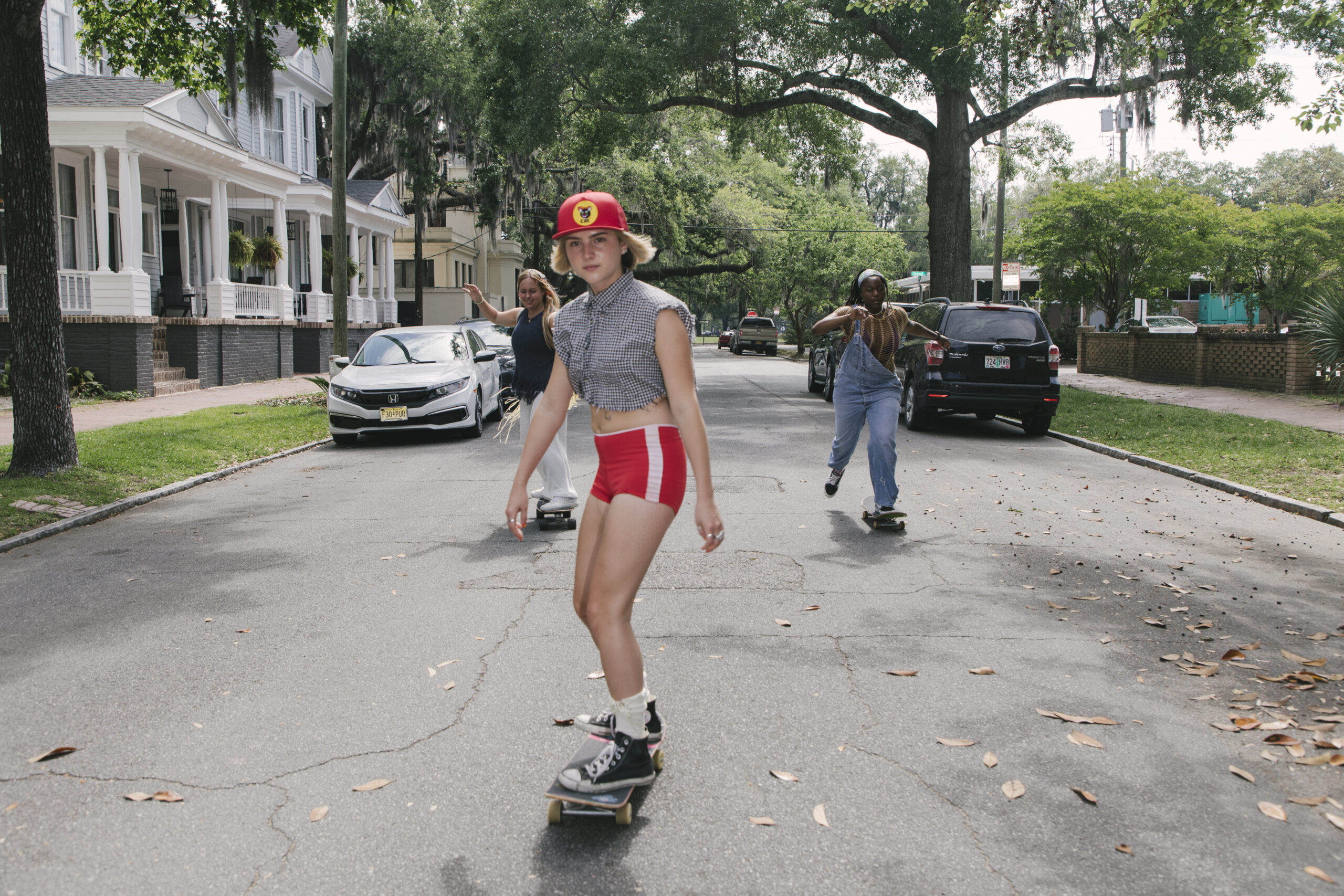Skateboarding embodies style at its core. It’s not just about riding the board but about expressing yourself through movement and appearance, a true art form. Through your clothing choices and the flow of your movements, your style and flair reflect your individuality within the scene of skateboarding. It’s all about how you flow on the concrete, how you carve your identity into the pavement, and how you make the board an extension of your being.
I’ve been skating for as long as I can remember, introduced to the passion by my dad and my brothers. It’s always been a part of our lives. My best friend, Maddi, and I were practically raised at the skatepark, skating with our dads before we could even tie our shoes. From those early moments, skating became not just something we did but a part of who we were.
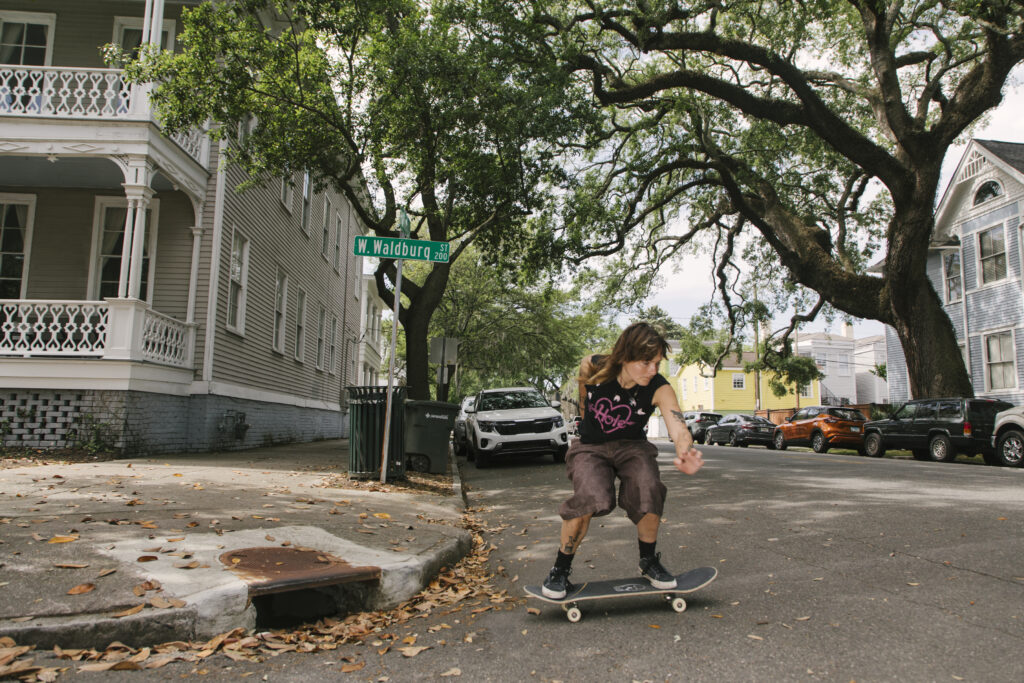
Growing up in the skate scene taught me resilience and toughness from a young age. Falling and getting back up was just part of the fun, instilling in me the belief that I could overcome any challenge. Gender never entered the equation; Maddi and I skated alongside the boys, replicating their moves, matching their intensity, carving out a place in a world that sometimes seemed built for them. It was a part of our little lives to be with the crew, just like our dads. This was the start of our journey as girl skaters, always looking up to and being with the guys.
As I got older, I noticed a shift. I realized skateboarding wasn’t common among girls, with only a handful around to look up to. It was those few girls who inspired us that proved we belonged on the board just as much as anyone else. Yet, the lack of representation in our dads’ old skate magazines and videos made it feel like a solitary pursuit at times. To fit in, I found myself changing to be a bit more masculine, wearing baggy clothes and darker colors, avoiding anything too girly to be taken seriously by the guys. It felt, at times, like I had to suppress certain aspects of myself, to hold back the femininity that threatened to undermine my credibility as a skater.
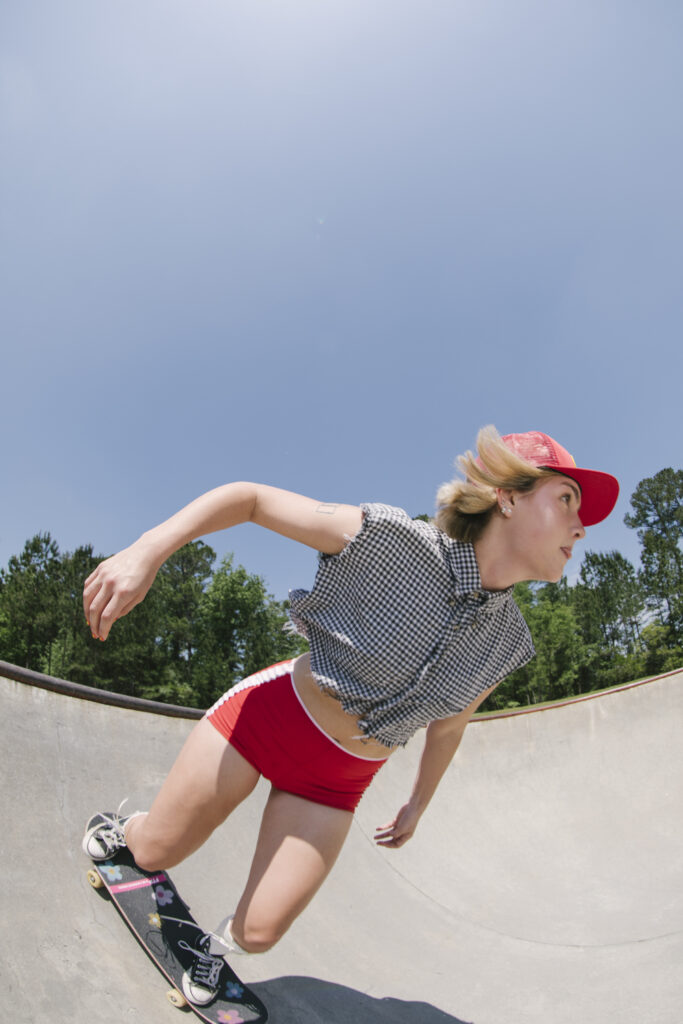
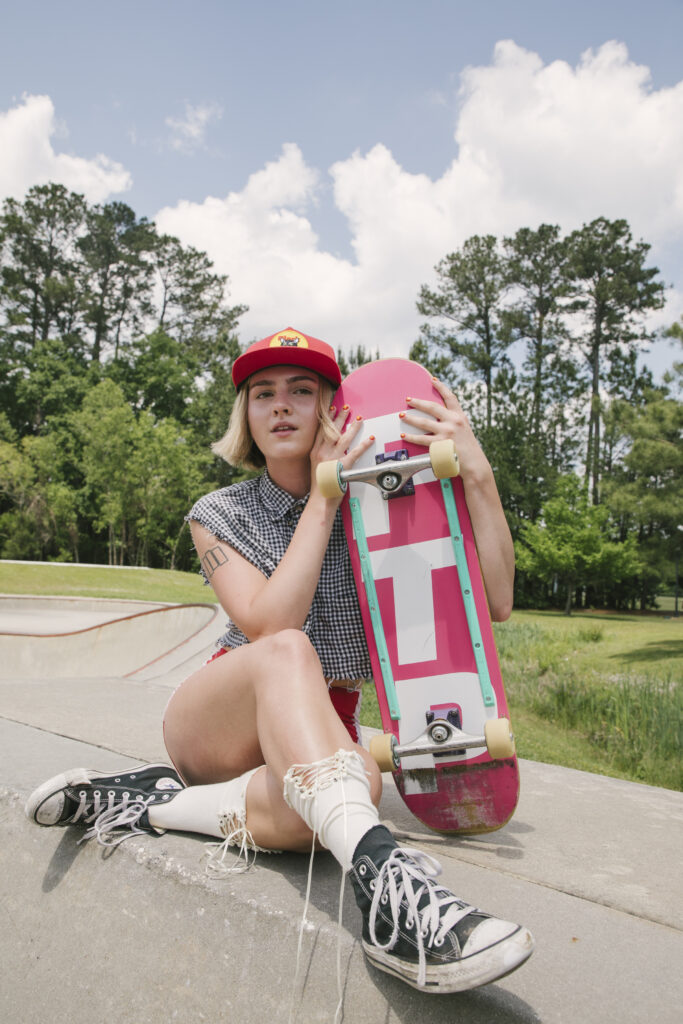
It was a balancing act, trying to earn respect on my board while dodging unwanted attention.
Our dads helped ease Maddi and my introduction into the skate scene, but after moving away from my local scene, I realized how much scrutiny I faced as a girl skateboarder. Each new park brought stares and skepticism from the guys. I had to prove myself repeatedly, dismissing doubts about my abilities and intentions. Girl skaters, like myself, feeling out of place in the skateboarding world has been an issue since the sport’s origin.
In the early days of skateboarding, women like Patti McGee, who became the first professional female skateboarder in 1964 and winner of the 1965 Women’s National Skateboard Championship, and Peggy Oki, who joined the Zephyr BOYS (Z-Boys) skateboarding crew in 1975, were among the few female pioneers in the scene. Even with their presence in early skate competitions, women still struggled to find a place. It wasn’t until the 1990s, more than five decades after skateboarding began, that women began gaining recognition in the sport, with a women’s division introduced at the Slam City North American Skateboard Championships.
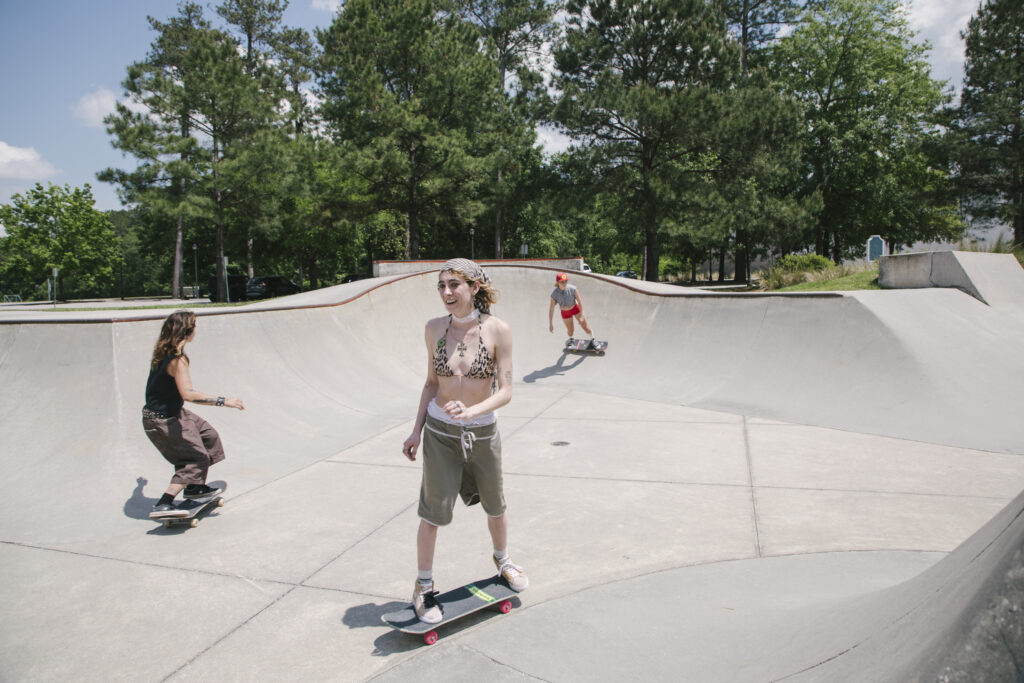
While female representation has improved in the scene, the lack of female influence in skateboarding’s early years allowed the foundation of skate culture and style to be primarily shaped by men and their values. With limited female role models, aspiring girl skaters often looked up to the guys, striving to match their style and skill to earn respect within the scene. It wasn’t until 1989, eight years after Thrasher magazine launched, that the skate publication featured a woman, Cara Beth Burnside, on its cover. However, this milestone represented a sliver of coverage compared to what male skaters received at the time.
Women have faced numerous barriers in skateboarding, including limited participation in competitions, significant disparities in prize money, and minimal representation in media coverage. In recent years, female skaters have taken the reins, with Burnside and Mimi Knoop founding Hoopla Skate to champion female representation in skateboarding. Exposure within the skate industry has seen further improvement with the addition of skateboarding in the summer Olympics, including women’s divisions, which have provided greater visibility to female skaters like Lizzie Armanto and Nora Vasconcellos.
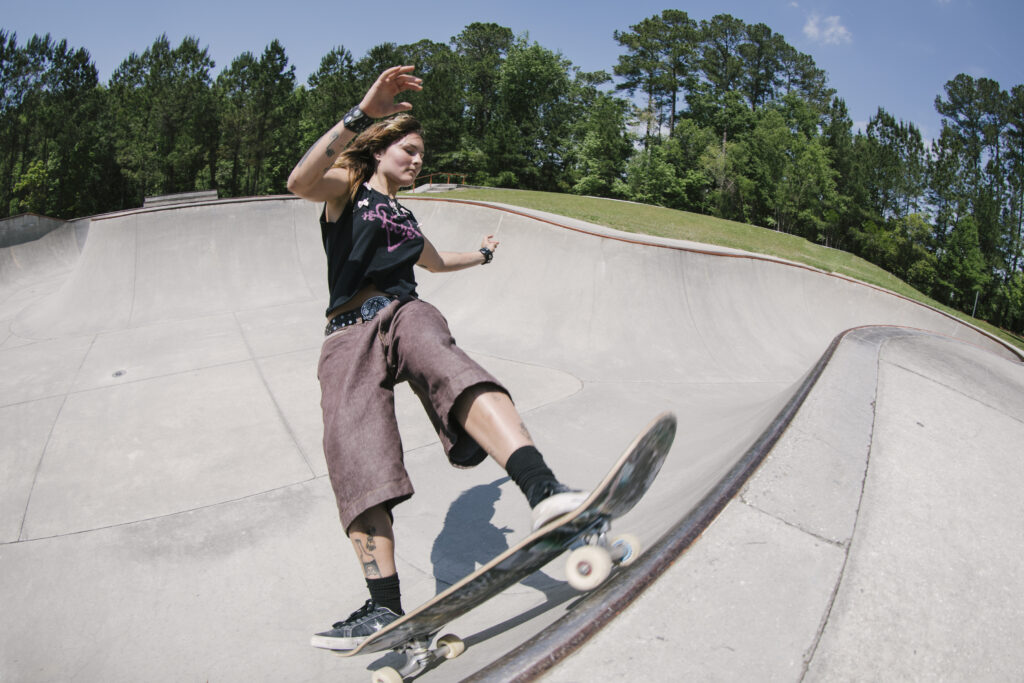
Vasconcellos, known for her energetic vibrancy and passion for pastels (particularly lavender), has developed unisex clothing and shoe designs that blend skate durability with inclusive lifestyle. Armanto, also celebrated for her dynamic self-expression through her ever-changing hairstyles, currently sports a bold red and black shag. In addition to her hair, Armanto showcases her personal style through collaborations with Vans, designing an innovative skate shoe with an abundance of colorways to have the perfect fit for all skaters.
The rise of skaters like Amanto and Vasconcellos has paved the way for more diverse representation in the industry, leading to increased support and recognition for female skaters.
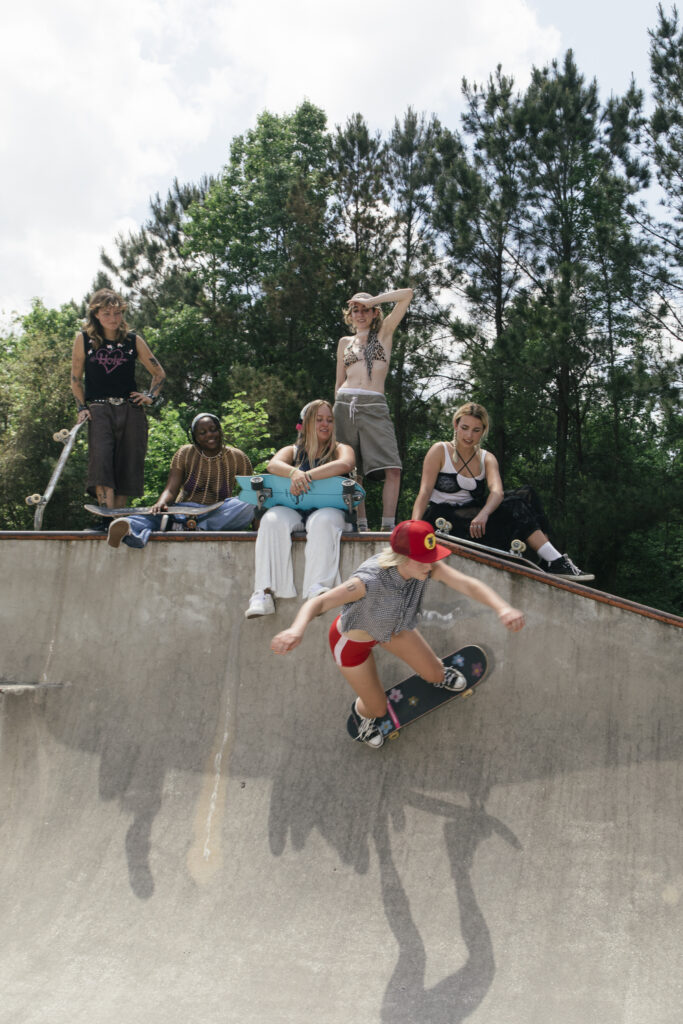
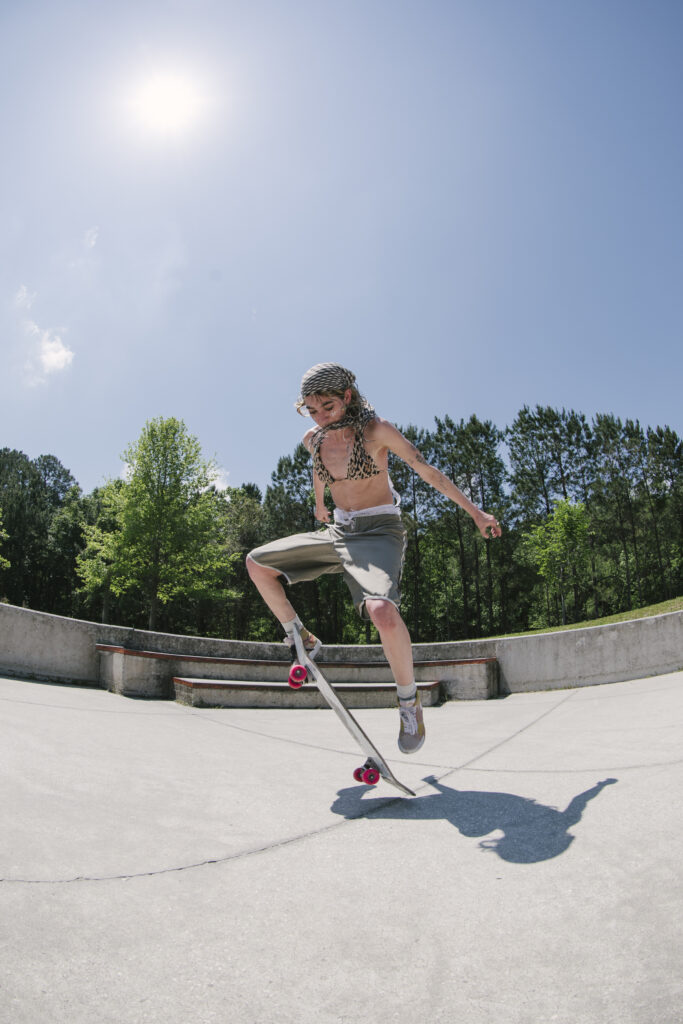
As their spotlight grows brighter, so too does the presence of other girl skaters, each one a testament to the power of persistence, resilience, and never giving up on your dreams, even if they’ve seemingly never been done before. Now, girls are carving the path of skate style’s future by boldly expressing themselves creatively, while breaking down barriers in the process.
So, what if skate style was defined by women? It’s not just a hypothetical question—it’s a call to action. By skating like ourselves, dressing authentically, and bringing our crew along for the ride, we’re reshaping the narrative and image of skateboarding. We are the change, the driving force behind a new era of inclusivity and acceptance in the skate scene.
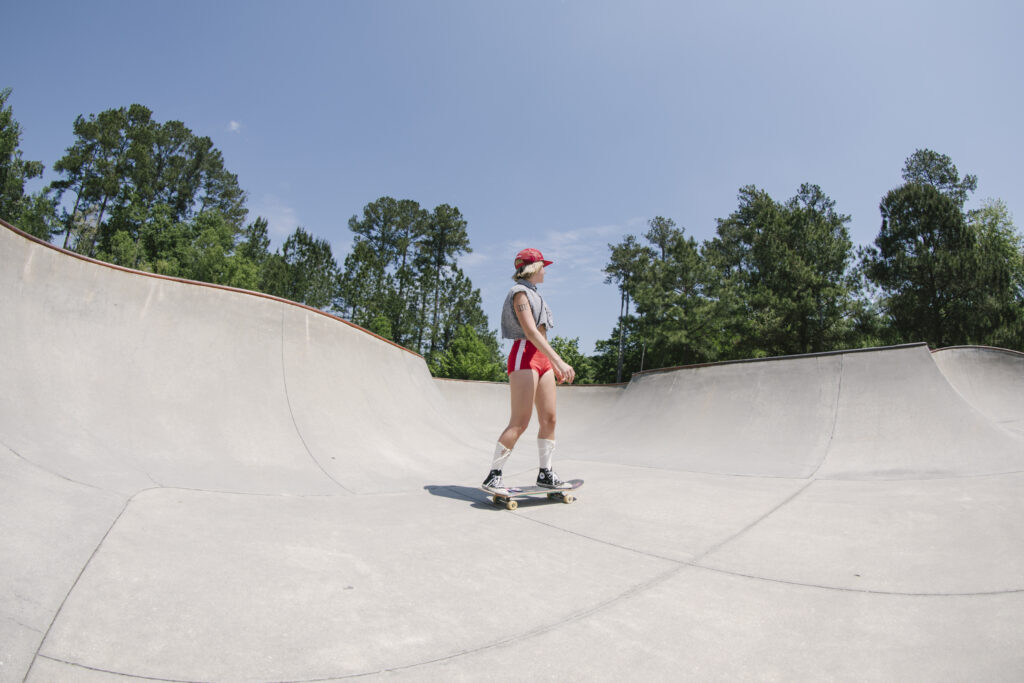
Creative Director: Karli Gifford @karligifford
Assistant Director: Meghan Higginson @mmeghananne
Director of Photography: Owen Walker @owalk21
Photographer: Heather Bloomfield @hblphotography
Stylist: Alex Murphy @m1ssal3x
Hair and Make up: Meghan Higginson @mmeghananne
Camcorder Handler: Sabrina Istrope @ninathecrab
TALENT
Lily Paul @ lilyypaul
Mia Larson @bathroomratings666
Sabrina Istrope @ninathecrab
Alex Murphy @m1ssal3x
Sydnee Pearson @sydnee.pearson

